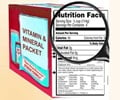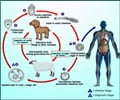
‘Among patients diagnosed with anaphylactic food reactions in 2016, the highest average costs per patient were for anaphylactic reaction to fish.’
Tweet it Now
This is according to research from FAIR Health, a national, independent, nonprofit organization dedicated to bringing transparency to healthcare costs and health insurance information. In a new white paper, Food Allergy in the United States: Recent Trends and Costs--An Analysis of Private Claims Data, FAIR Health analyzed data from its database of more than 24 billion privately billed healthcare claims to study many aspects of food allergy, including geography; anaphylactic food reactions (severe, life-threatening reactions to certain foods); age; gender; places of service; most common treatments and services; and costs and number of services per patient. This white paper has been made possible in part with the generous funding of Food Allergy Research & Education (FARE).
Other findings reported in the white paper include:
Geographic Patterns
In many states, claim lines with food allergy diagnoses represented an increasing share of all medical claim lines from 2009 to 2016. The association between states and food allergy fluctuated over time. In 2009, the five states with the highest percentage of claim lines with food allergy diagnoses compared to all medical claim lines were (in order from highest) New York, Georgia, Colorado, North Dakota and Ohio. The top five states in 2016 were (in order from highest) North Carolina, North Dakota, New Jersey, Washington, DC, and Connecticut. Only North Dakota remained in the top five in both years.
Advertisement
From 2007 to 2016, claim lines with diagnoses of anaphylactic food reactions rose 377 percent.
Advertisement
Different allergies were associated with different age groups. In the period 2007-2016, the age group 6-10 years accounted for 28 percent of all claim lines with peanut allergy diagnoses--but only 9 percent of all claim lines with food additive allergy diagnoses. Conversely, the age group 51-60 years accounted for 1 percent of claim lines with peanut allergy diagnoses, but 17 percent of claim lines with food additive allergy diagnoses.
Gender
In the period 2007-2016, claim lines with food allergy diagnoses were associated with boys more than girls from birth through age 18. However, for individuals older than 18 years the reverse was true: Food allergy claim lines were associated with women more than men.
Treatments and Services: Procedure Code Categories
Office or outpatient services to an established patient, immunology services and allergy testing were, respectively, the first, second and third most common procedure code categories of treatments and services associated with food allergy diagnoses in the period 2007-2016.
Costs and Number of Services per Patient
Milk product allergy was the food allergy with the highest average costs and services per patient in 2016. Among patients diagnosed with anaphylactic food reactions in 2016, the highest average costs (both charges and allowed amounts) per patient were for anaphylactic reaction to fish.
"Food allergy is an issue of growing national health concern," stated FAIR Health President Robin Gelburd. "It is our hope that FAIR Health data can help inform public policy and spur further research into this issue."
"This white paper uncovers critical facts about food allergy in a manner that we haven't previously seen," commented James R. Baker, Jr., MD, CEO and chief medical officer of FARE. "The FAIR Health data collection presents an unparalleled window into the costs, demographic factors and geographic patterns of this public health issue. In our role representing millions of Americans affected by food allergy, these findings are critically important as we continue our efforts to improve the quality of life of all those living with food allergies. We at FARE remain concerned that this issue is underappreciated by the public and policy makers."
Source-Eurekalert















